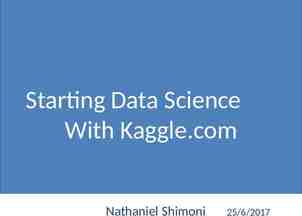Principles of Budgeting
48 Slides2.67 MB
Principles of Budgeting
Learning Objectives Discuss concepts of budgeting. Identify examples of budget-planning steps. Identify examples of stages of the budget. Examine elements of cost accounting in a health-care organization. Define selected terms related to budgeting. Differentiate between direct and indirect costs. Differentiate among fixed (electric bill, personnel), variable (depends on volume, # of pts), and sunk costs (fixed expenses that you cannot recover cost of a building).
Learning Objectives (continued) Describe various budgets: operating or cash budgets, personnel budget, supplies and equipment budget, capital budget. Discuss the budget as a controlling process. Discuss monitoring of the budget. Discuss motivational aspects of the budget. Discuss cutting the budget. Observe preparation of the budget for an agency or a cost center.
Budget is an operational plan, stated in income and expense terms, covering all phases of financial activity for a future division of time.
Budgeting is an ongoing activity in which revenues and expenses are managed to maintain fiscal responsibility and fiscal health.
Cost Center is a given area of assigned accountability for both direct and indirect expenditures.
Budget Stages (Calendar) cover a fiscal year and include the formulation stage of gathering and organizing information, the review and enactment stage of presenting the budget for approval by management and the governing board, and the execution stage in which cost center managers enact the budget.
Cost Accounting is a system that assigns all costs to cost centers by direct costing if they are direct costs of patient care, by transfer costing if from a patient care support department, or cost allocation if not related to direct patient care or support.
Fixed Costs are costs that remain constant even as volume increases or decreases over a period of time.
Variable Costs are related to volume and increase or decrease according to use.
Sunk Costs are fixed expenses that cannot be recovered even if a program is cancelled.
Direct Costs are the costs of providing the product or service.
Indirect Costs are costs incurred in support of providing the product or service.
Activity-Based Costing is a system that accounts for the total process of doing business from personnel, supplies, material, and parts to installation and service of products. P. F. Drucker
Revenue Budgeting is the process by which an agency determines revenues required to cover costs and establishes prices to generate these revenues.
Expense Budgeting is the process of forecasting, recording, and monitoring the monetary needs of an organization relative to personnel, supplies, and equipment for controlling purposes.
Operating Budget is the overall plan identifying expected revenues and expenses, both fixed and variable, for the forthcoming fiscal year.
Cost-to-Charge Ratio is a tool for computing the cost of providing a service used within the context of the operating budget to determine charges to the patient.
Zero-Base Budgeting is a method of budgeting used to control costs in which everything must be justified starting from zero.
Cost-Benefit Analysis is where costs of a service are compared to its benefits to determine the least costly intervention that will achieve similar or better results.
Negative Cash Flow is a condition in which collections or revenues lag behind expenditures.
Service Units are measurable units of productivity or volume for identifying and counting costs.
Chart of Accounts is a system that includes a number and table for each cost center and is divided into major classifications and sub-codes.
Inventory is an accurate count of on hand equipment and supplies.
Financial Standards are objects (budgets, the Medicare cost report, and a system of accountability for managing revenues and expenses) that will insure the judicious use of costly health care personnel and material.
Performance Budgeting focuses on the activities of a cost center such as indirect care, direct care, and quality monitoring with each activity having objectives.
Personnel Budget is projected personnel needs including wages, salaries, and fringe benefits for specific numbers and skills for a fiscal year.
Supplies and Equipment Budget is projected costs of supplies and equipment costing less than the base set for capital equipment for a fiscal year.
Capital Budget is projected fiscal year costs of new or replacement equipment that will cost above a base amount and that will be used over a period of years.
Unit of Service is a measurement of the output of agency services consumed by the patient such as minutes or hours in the surgical suite or recovery room.
Revenue is the projected and actual income from sale of goods and services.
Expenses are the projected costs of doing business.
Patient Days are the cumulative data of days spent in a health care institution by patients.
Fiscal Year (FY) is the budget year.
Year to Date (YTD) is the sum of any statistical or demographic data for the fiscal year to a current date.
Average Daily Census (ADC) is summary data for an aggregate number of patients divided by a specific number of days.
Hours of Care are the number of hours of care allocated per category of patient for a 24-hour period.
Care Giver is a person providing care to a patient or patients.
Budgeting Procedures Determine the productivity goal Forecast workload Budget patient-care hours and staffing schedules Plan nonproductive hours Chart productive and nonproductive time Estimate costs of supplies and services Anticipate capital expenses (building, furniture, ekg machine breaks down)
Cost Factors Fixed, variable, and sunk costs Direct and indirect costs Cost accounting Service units Unit of service Chart of accounts Inventory and cost transfer Financial accountability The cost of nursing care – Activity based costing
Cost-to-Charge Ratio if the charge for 1 hour of nursing care to a level 1 patient is 225.00 and the cost-tocharge ratio is 0.850390, then the cost is 0.8504 x 225 191.34 ( 191.34: 225.00 191.34/ 225 0.8504)
Break-Even Analysis





















































